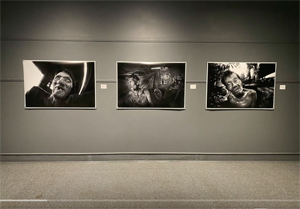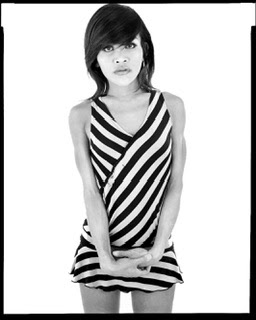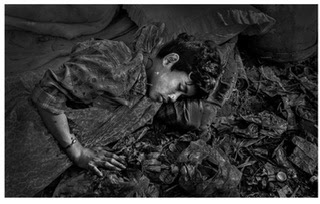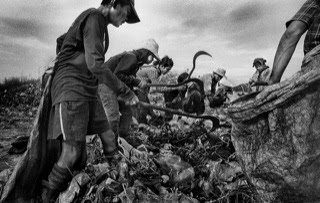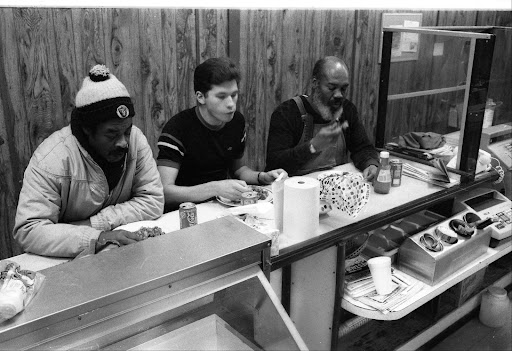Here is a review of my former friend Dupree Bolton's music from allmusc.com, written by Michael G Nastos. At the link you can hear sort clips of the music. I have ordered this DVD "Fireball" so will be listening closely to all the music later in the dark. Wonder what Dupree would have thought of me buying all his music 30 years later? He probably and rightly would have wanted his cut of the money :)).
http://www.allmusic.com/album/fireball-mw0000793794
http://www.allmusic.com/album/fireball-mw0000793794
AllMusic Review by Michael G. Nastos
If you own jazz recordings by saxophonists Harold Land or Curtis Amy, you may be familiar with trumpeter Dupree Bolton. Amidst his numerous arrests and incarcerations, Bolton was a fine modern jazz player beyond the lyrical tone of Lee Morgan and just shy of Freddie Hubbard. Where his personal story, beginning circa 1929 in Oklahoma City and ending at the Marina Convalescent Hospital in Alameda in 1993, is a tragic one of ignorance and drug addiction, Bolton's playing in his prime should be considered as good as any in the early '60s. This is a curious collection featuring previously unissued material from a Los Angeles radio broadcast with Amy's sextet, two tracks for the Pacific Jazz label with a co-op sextet, and a tenet from 1980 recorded at the Joseph Harp Correctional Center in Lexington, OK. Hard and post-bop form the centerpiece, but you get some contemporary original soul funky sounds as well. Bolton's sound is faithfully represented, a solid tone that expresses a vocal quality, not particularly flashy, but strong melodically. The Winter 1963 selections from the Frank Evans hosted program Frankly Jazz are bookended by Bolton's theme and the emcee's announcements, including a short "Summertime" with Amy up front and Bolton sublimated. But the trumpeter steps up on Amy's famous quintessential hard bopper, "Katanga," with short thematic phrases leading to solid solos. Pianist Dolo Coker is included, and sounds great with his two-handed power chords and wealth of ideas surrounding the horn players, while guitarist H. Ray Crawford delicately strums or plucks rhythmic strains expertly and tastefully. A basic "Blues for Amy" in the vein of Horace Silver, and a ballad feature for Bolton "Laura," expand the concept of this excellent combo.
The other tracks from June 1963 feature a front line of Bolton, the obscure alto saxophonist Earl Anderza , young tenor saxophonist Hadley Caliman, and pianist Roosevelt Wardell's trio. Anderza has a strained legato sound that underscores the post-bop track "Joe & I," while Bolton's completely sad brass sound identifies the 100-percent regretful "Midnight Lament." It should come as no surprise that Bolton and Anderza were clashing, battling for solo time. In Oklahoma, eight inmates including Bolton join music director and artist in residence Dr. Paul Brewer (at the time of this writing employed at Aquinas College in Grand Rapids, MI) and bassist Elisha Martin for four numbers. Brewer penned the unsteady "Monk's Tunnel" and doubles on trombone or Fender Rhodes piano as Bolton and fellow trumpeter Monty Boyd ease into a modern swing. "John's Tune" is co-written by Brewer and John Pemberton, one of two guitarists in the ensemble, as the trumpeters sing in unison for a contemporary funk piece. "Shackle Blues" is "All Blues," but even more stripped down than the original basic melody while adding phrases from "Coltrane's Blues," and "Chano" hints at Latin music, but adopts a swampy danceable contemporary blues beat. Drummer Jerome Nelson (spelled incorrectly in the credits) is in this band, the only other musician with any professional credentials, having worked with Richard "Grove" Holmes. Boyd is also a fine musician who keeps up with Bolton and doubles on flute, while alto and tenor saxophonist Gene Smith could have also been notable on the scene had he not had his run-ins with the law, contributing a fine solo during "Shackle Blues." This recording is rare in that Dupree Bolton's discography is scant, but it remains a curio in that it only scratches the surface as to the kind of artist he might actually have been. He remains a missing link in the annals of jazz until a more comprehensive recording surfaces, but a very informative 40-page booklet does tell the larger story of his trials and travails where his biography is more telling and intriguing than his music...for now.










